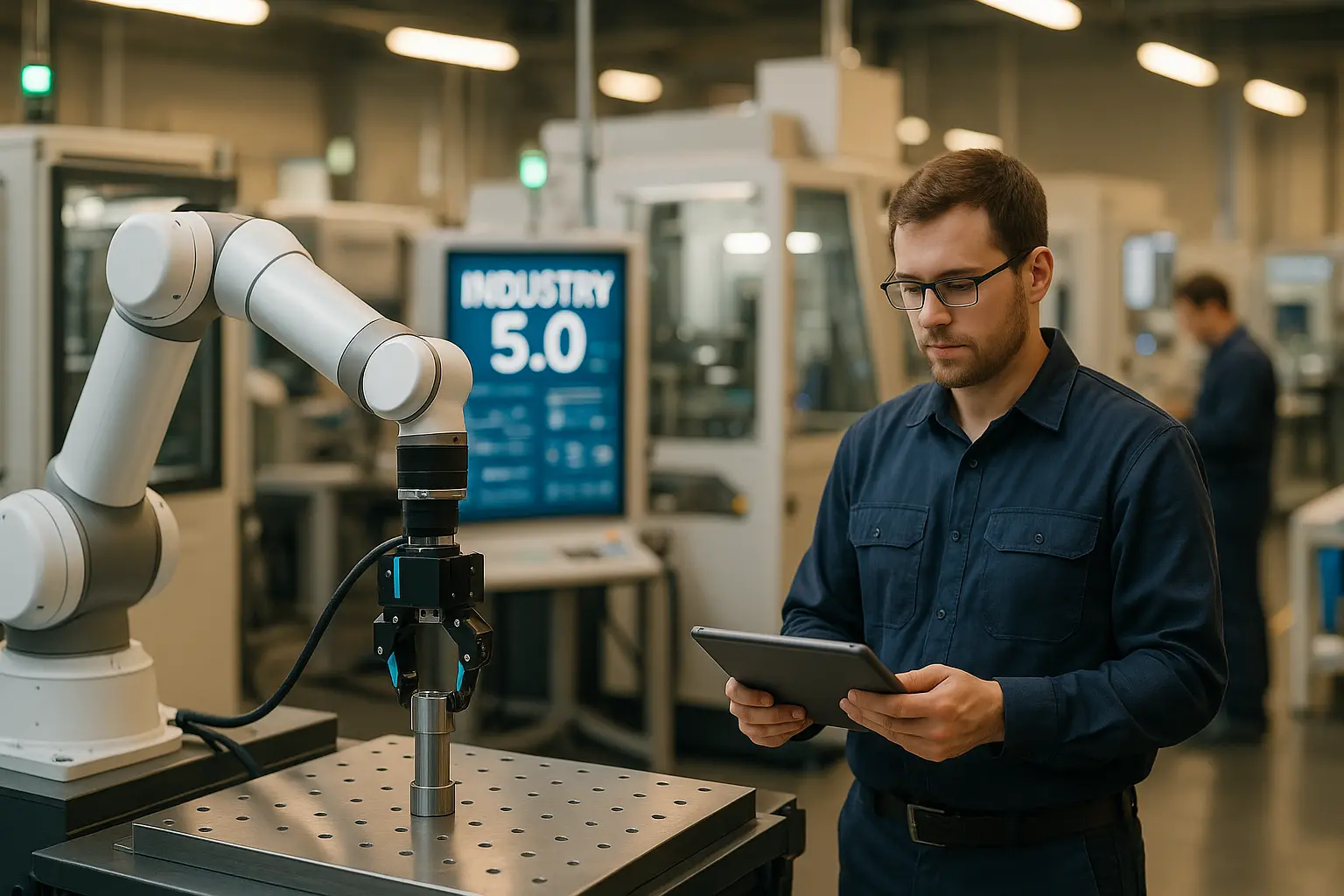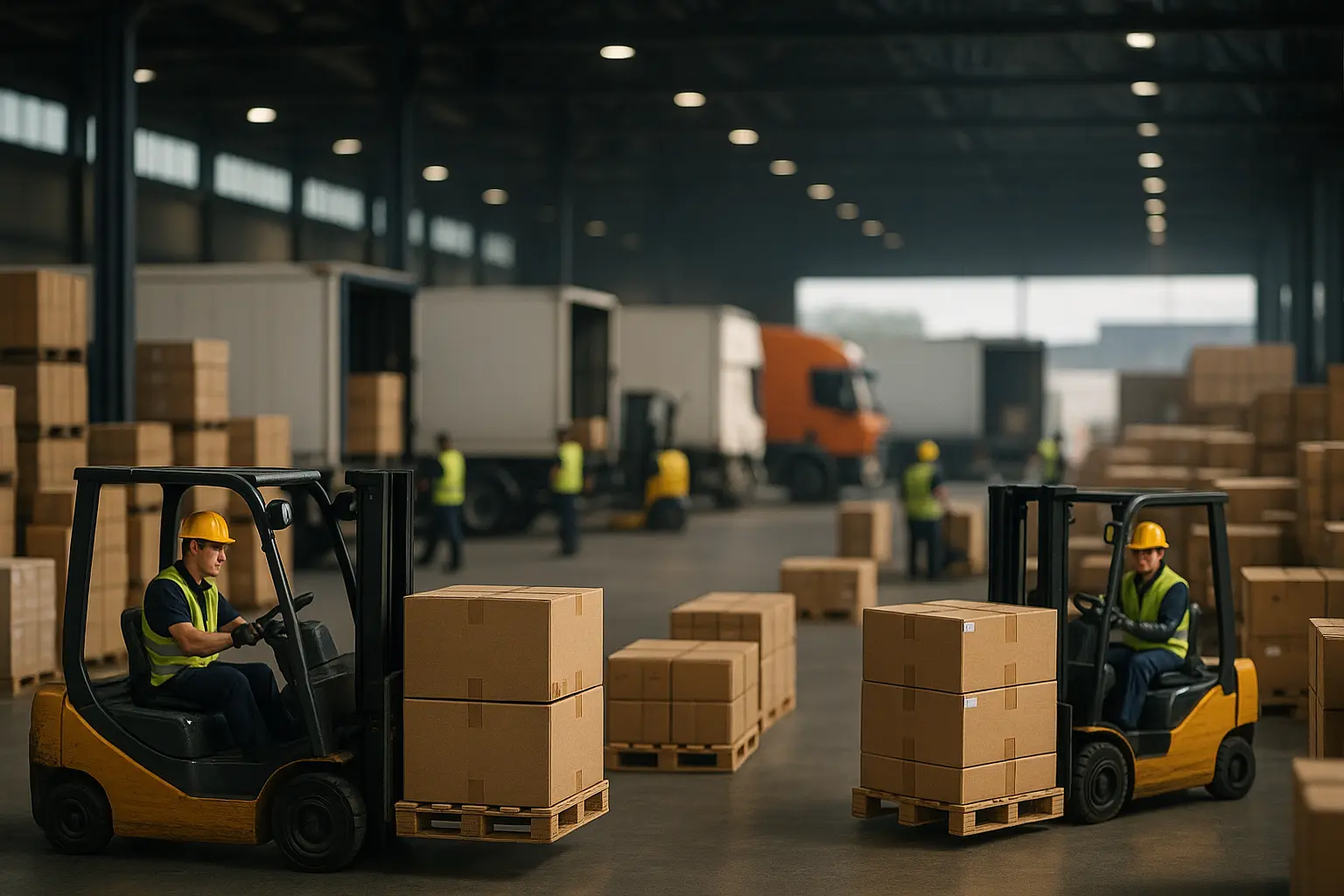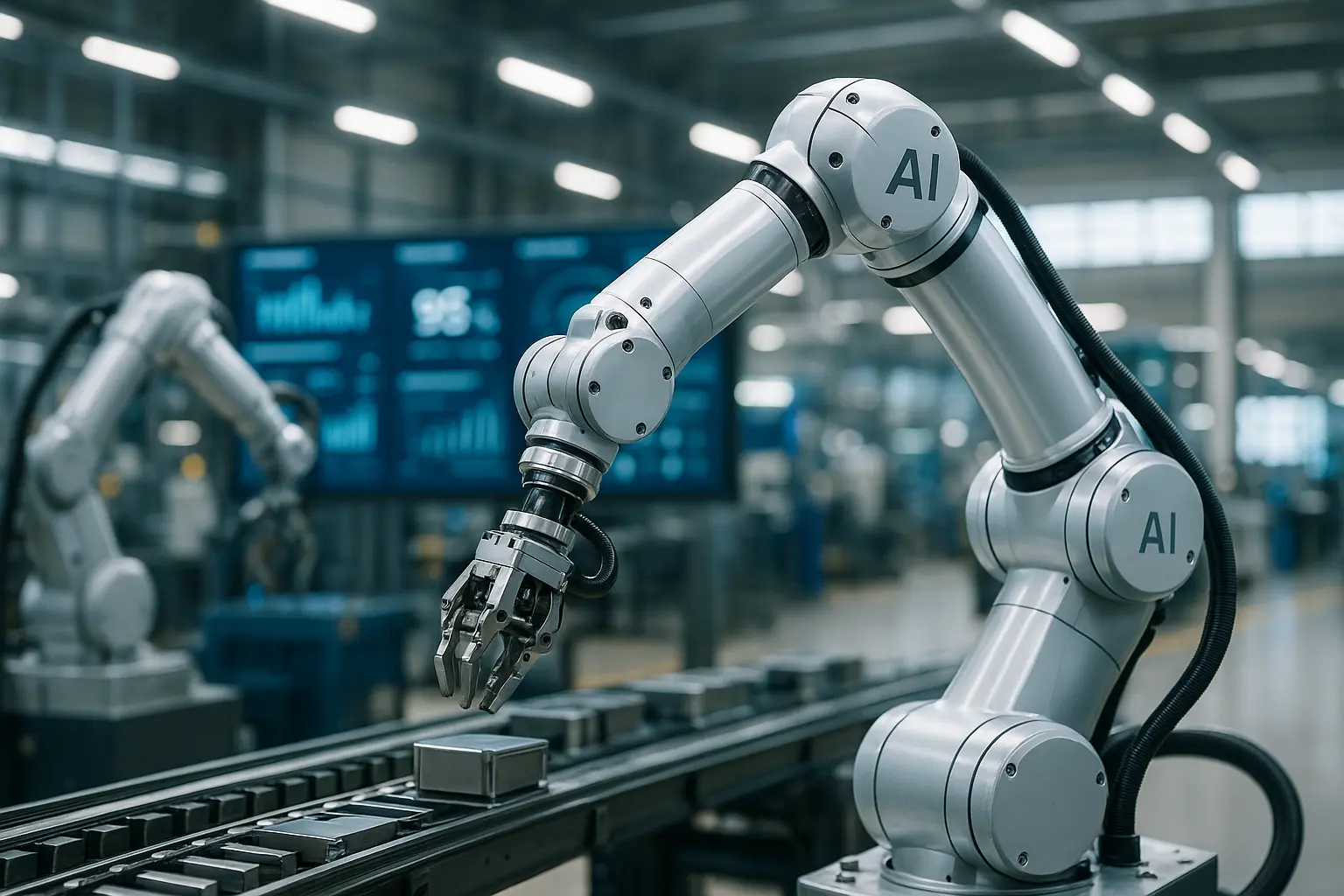The rise of Industry 5.0: human-centric manufacturing explained
As we stand on the precipice of a technological renaissance, Industry 5.0 emerges as a pivotal shift that places human-centricity at the core of manufacturing. The evolution from Industry 4.0 to 5.0 signifies more than just a progression in technology; it represents a transformative leap that intertwines the capabilities of machines with human creativity. This advancement underscores the necessity for sustainability, adaptable systems, and the harmonious integration of human skills with digital processes. In this era, we are not spectators but active participants, shaping the future of industries and redefining their very essence.
Embracing the Human Element: A New Industrial Paradigm
With the dawn of Industry 5.0, the emphasis shifts from sheer automation to a more human-centric approach. This new phase recognizes the invaluable contribution of human intuition and creativity alongside advanced technologies. At its heart, Industry 5.0 seeks a symbiotic relationship where workers collaborate with smart machines to enhance productivity and innovation.
In traditional settings, the focus was predominantly on efficiency and throughput. However, as data becomes more crucial, we observe a pivot towards valuing human insight. The production processes are becoming increasingly custom-oriented, catering to the specific needs of the end-user. This transformation is not just a trend but a necessity, driven by rising consumer expectations.
Industry 5.0 heralds a future where human skills are celebrated rather than overshadowed by digital advancements. It represents a shift from isolated digital systems to integrated environments that consider the socio-cultural aspects of manufacturing. As technologies evolve, we must remain vigilant about the balance between digital efficiency and human empathy, ensuring that industrial growth aligns with sustainability and ethical standards.
Technologies Fueling the Revolution: A Focused Insight
The backbone of this new industry era is a suite of cutting-edge technologies designed to augment human potential. Artificial intelligence (AI) and machine learning are no longer mere buzzwords but integral components of our production landscapes. These technologies empower us to make informed decisions, minimize errors, and enhance processes, ultimately leading to sustainability in manufacturing.
With the help of Google’s AI advancements and other tech giants, we now have unprecedented access to data that drives innovation. These tools enable us to predict market trends, optimize supply chains, and reduce resource wastage. Moreover, as scholars continue to explore the potential of digital twins and augmented reality, we are on the brink of creating immersive, highly efficient work environments.
The challenge lies not in the availability of technology but in its integration within existing systems. As we move towards a more human-centric approach, it’s crucial to ensure that technologies serve as facilitators, not replacements, of human labor. This requires a cultural shift within organizations, where workers are trained to collaborate with machines, leading to a more engaging and future-proof workplace.
Sustainability in Manufacturing: The Ethical Imperative
As the global community grapples with the consequences of environmental neglect, sustainability has emerged as a core tenet of Industry 5.0. The focus now extends beyond mere production metrics to encompass the long-term impact of manufacturing on our planet.
In this evolving industrial landscape, it’s imperative that we adopt processes that minimize waste, reduce emissions, and promote the use of renewable resources. This not only aligns with environmental goals but also appeals to the growing demographic of eco-conscious consumers. The incorporation of data-driven insights allows businesses to identify inefficiencies and implement changes that foster sustainable growth.
Furthermore, the emphasis on sustainability transcends environmental concerns, touching upon ethical labor practices and community welfare. As organizations strive to meet these standards, transparency becomes a crucial factor. By leveraging digital technologies, companies can provide real-time updates on their processes, ensuring accountability and building trust with stakeholders.
The challenge is to balance innovation with ecological and social responsibility, creating an ecosystem where technologies and human values coalesce to form a truly sustainable future.
The Way Forward: A Collective Vision for Industry 5.0
As we chart the course towards a future defined by Industry 5.0, a collective effort is paramount. This endeavor requires collaboration between governments, businesses, scholars, and the public to foster an environment conducive to innovation and growth.
The road ahead is paved with opportunities, but the journey demands foresight and adaptability. Embracing a culture of continuous learning, we can harness the potential of technologies to unlock new possibilities and overcome unforeseen challenges. As workers, we must be willing to evolve alongside machines, cultivating a skill set that complements digital advancements.
Ultimately, Industry 5.0 is about redefining the relationship between humans and machines, ensuring that technology serves humanity, not the other way around. By developing systems that value creativity and insight, we pave the way for a human-centric industrial landscape where sustainability, innovation, and ethics coexist harmoniously. This vision is not just aspirational but essential as we strive to build a world that is resilient, inclusive, and attuned to the needs of time.
In conclusion, Industry 5.0 represents a harmonious convergence of human ingenuity and technological prowess. This era is not about replacing the human touch with digital precision but about enhancing our capabilities through a purposeful integration of technologies. As we stand at this crossroads, the responsibility lies with us to shape a world where sustainability, innovation, and ethics are not mere ideals but lived realities.
The future of manufacturing is bright, provided we embrace the human-centric approach, ensuring that the systems we create are not just efficient but also equitable and sustainable. Let us rise to the occasion, crafting a new symphony where humanity and machines work in perfect harmony, heralding an era of unprecedented growth and progress.
FAQ
What is Industry 5.0 and how does it differ from Industry 4.0?
Industry 5.0 emphasizes collaboration between humans and machines, focusing on personalizing production processes using advanced technologies like AI and robotics. Unlike Industry 4.0, which primarily aimed at automation and efficiency, Industry 5.0 seeks to reintroduce the human touch in manufacturing.
How does human-centric manufacturing benefit companies and their employees?
Human-centric manufacturing fosters a more adaptable and innovative work environment. For companies, it leads to improved customization and responsiveness to customer needs. Employees benefit from engaging roles that leverage their creativity and problem-solving skills alongside advanced technologies.
What technological advancements are central to Industry 5.0?
Key technologies include collaborative robots (cobots), advanced AI systems, and smart sensors. These innovations enhance human capabilities, allowing for more intuitive and efficient interactions between workers and machines.
How does Industry 5.0 impact sustainability in manufacturing?
Industry 5.0 promotes sustainable practices through efficient resource management and waste reduction. By leveraging smart technologies, manufacturers can optimize energy usage and minimize environmental impacts, contributing to a more sustainable industrial landscape.
What challenges might companies face when transitioning to Industry 5.0?
Transitioning to Industry 5.0 involves overcoming several challenges, such as upskilling the workforce, integrating new technologies with existing systems, and ensuring data security. Companies must also foster a culture that embraces change and innovation to successfully implement human-centric manufacturing.














Post Comment